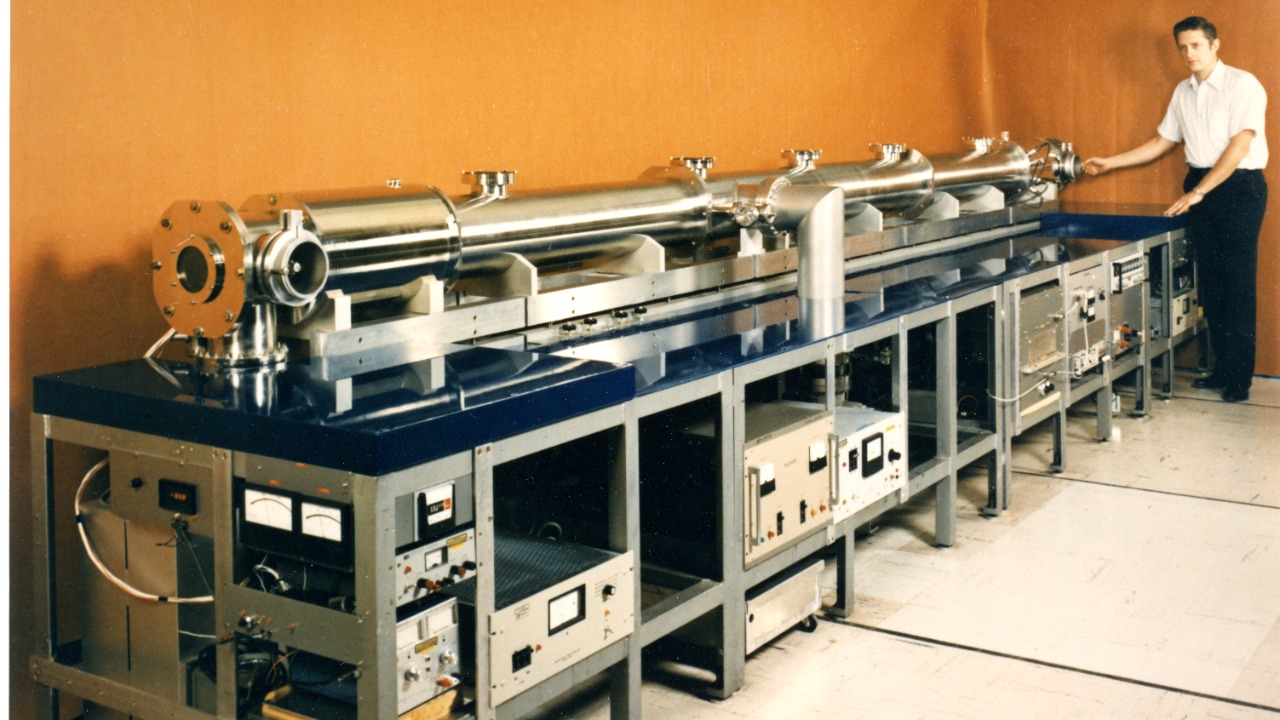
Recent breakthroughs in data storage technology have taken a groundbreaking turn with scientists successfully storing data within a single atom. This remarkable achievement could revolutionize the way we think about data storage, offering unprecedented potential for miniaturization and efficiency.
The Breakthrough in Atomic Data Storage

The scientific community has long pursued the goal of ultra-miniaturized data storage, and recent experiments mark a significant milestone in this journey. Researchers have developed a method to store data within a single atom, a feat that represents a profound leap forward in the field. The experiments, conducted by a team utilizing copper and chlorine atoms, have demonstrated the feasibility of maintaining data within a stable atomic environment. This development is set to redefine data storage by drastically reducing the physical size of storage devices while simultaneously increasing their efficiency.
The choice of materials, specifically copper and chlorine, plays a crucial role in this breakthrough. These elements create an exceptionally stable environment, allowing scientists to store data at the atomic level with unprecedented reliability. The implications of these findings extend far beyond the immediate applications; they herald a future where data storage devices are not only smaller and more efficient but also capable of revolutionizing the architecture of computing systems. This advancement could lead to a new era of technological innovation, where data storage is seamlessly integrated into microscopic devices.
Mechanisms Behind Atomic Data Storage

At the heart of atomic data storage lies the exploitation of quantum properties, which permit the encoding of information within a single atom. This process involves manipulating the quantum states of atoms, a technique that allows researchers to encode data in a form that is both highly compact and stable. The use of rare-earth crystals in this context is particularly noteworthy, as they have the potential to store terabytes of data in a size comparable to a small grain of rice. The ability to harness these quantum properties opens up a new dimension in data storage technology, one that promises to vastly exceed the capabilities of conventional methods.
The process of encoding and decoding information at the atomic level is a sophisticated endeavor that requires precise manipulation of atomic states. Scientists employ advanced techniques, such as scanning tunneling microscopy, to achieve the necessary precision. This enables them to control the position and orientation of individual atoms, thereby encoding information in a manner that is both dense and durable. The interplay between quantum mechanics and data storage represents a fascinating frontier that is poised to transform the landscape of digital technology.
Challenges and Limitations

Despite its promise, atomic data storage faces several technical challenges that must be addressed before it can be widely adopted. One of the primary obstacles is maintaining data stability at such a minuscule scale. At the atomic level, even minor fluctuations in temperature or electromagnetic fields can disrupt data integrity. Researchers are actively exploring ways to enhance the robustness of atomic data storage, with some promising approaches involving advanced cooling techniques and electromagnetic shielding.
The current limitations of atomic data storage technology also extend to its practical applications. While the concept has been successfully demonstrated in laboratory settings, scaling the technology for everyday use is a complex challenge. The process of manipulating individual atoms is intricate and time-consuming, making it difficult to implement on a large scale. To overcome these hurdles, ongoing research is focused on developing more efficient methods for atomic manipulation, as well as exploring innovative solutions that could facilitate the transition from experimental setups to commercial applications.
Potential Applications and Impact on Technology

The potential applications of atomic data storage are vast and varied, with the capacity to transform industries ranging from computing to telecommunications. In the realm of data centers and cloud storage, the integration of atomic data storage could lead to significant improvements in energy efficiency and space optimization. By reducing the physical footprint of storage devices, data centers could achieve greater operational efficiency and reduce their environmental impact.
Beyond large-scale applications, atomic data storage also holds promise for consumer electronics and mobile devices. The ability to miniaturize storage components while enhancing their capacity could lead to the development of more powerful and compact devices. This would enable users to access and store vast amounts of data on devices as small as smartphones, fundamentally altering the way people interact with digital technology. The implications for industries such as virtual reality, augmented reality, and wearable technology are particularly exciting, as they could benefit from the enhanced storage capabilities offered by atomic data storage.
The Future of Data Storage and Quantum Computing

Atomic data storage is not only a breakthrough in its own right but also intersects with the burgeoning field of quantum computing. The principles underlying atomic data storage are closely aligned with those of quantum computing, which seeks to harness the power of quantum mechanics to perform calculations at unprecedented speeds. As both fields continue to evolve, their convergence could lead to a new era of data processing and storage capabilities.
The evolution of data storage technologies promises to have far-reaching implications for global data management. As the demand for data storage continues to grow exponentially, innovations like atomic data storage will play a crucial role in meeting these needs. The ongoing research and international collaboration in this area are vital to advancing the field and realizing its full potential. As scientists continue to push the boundaries of what is possible, the future of data storage looks increasingly bright, with atomic data storage poised to become a cornerstone of the digital landscape.